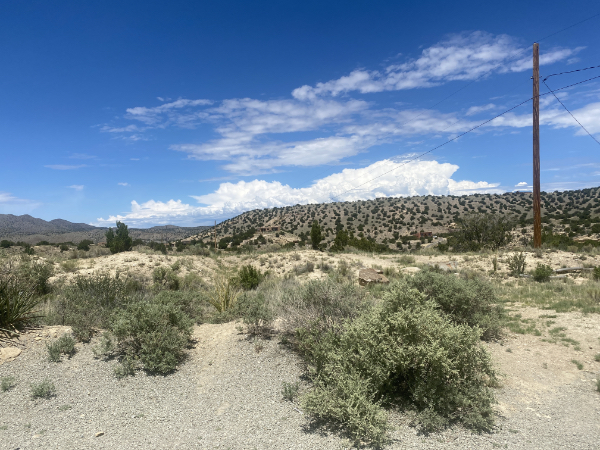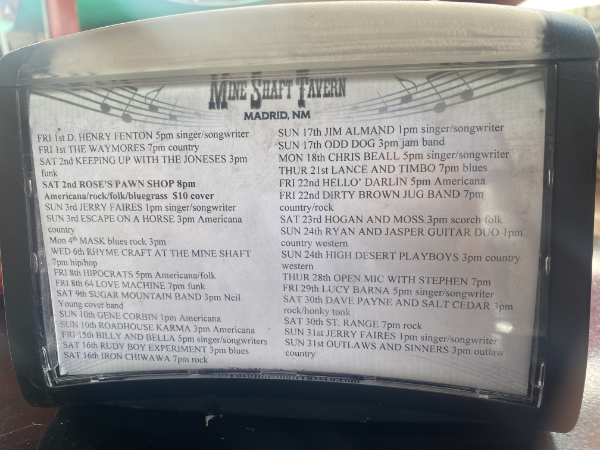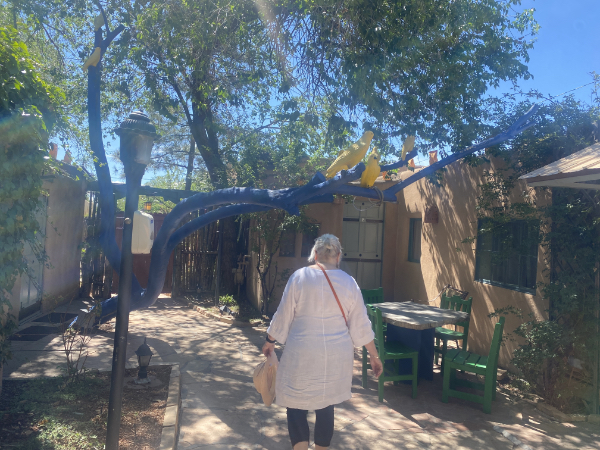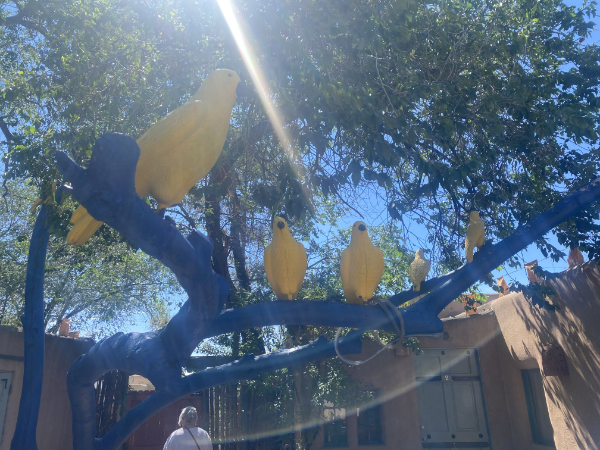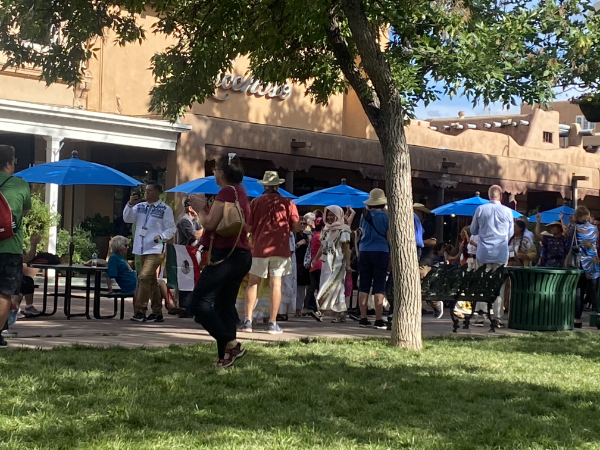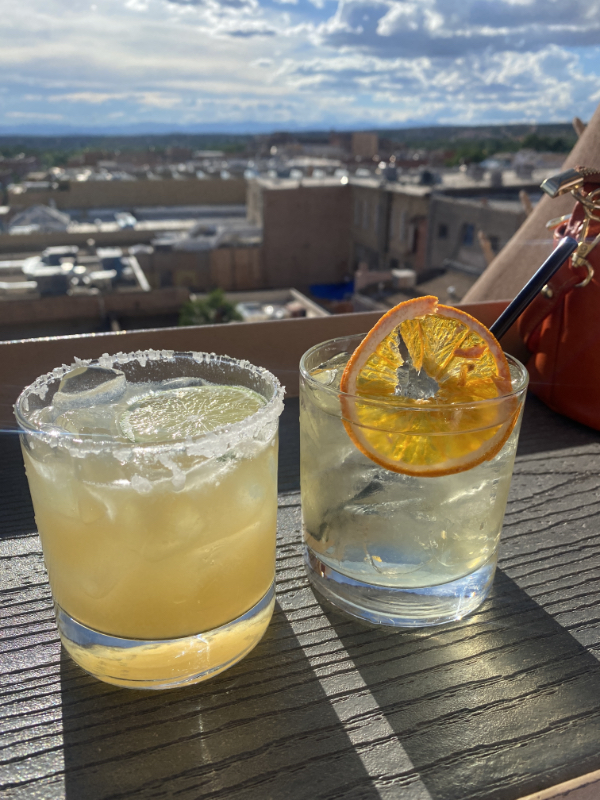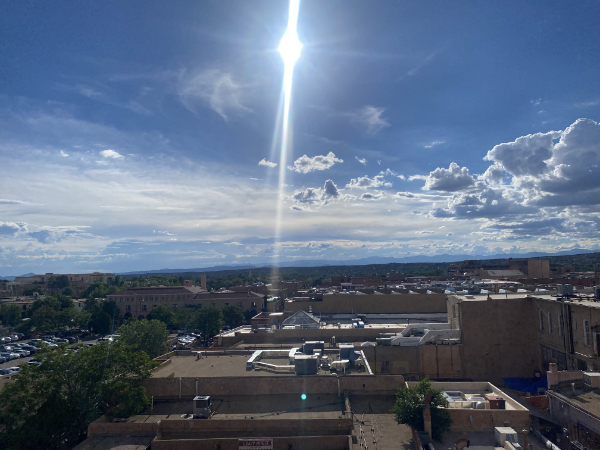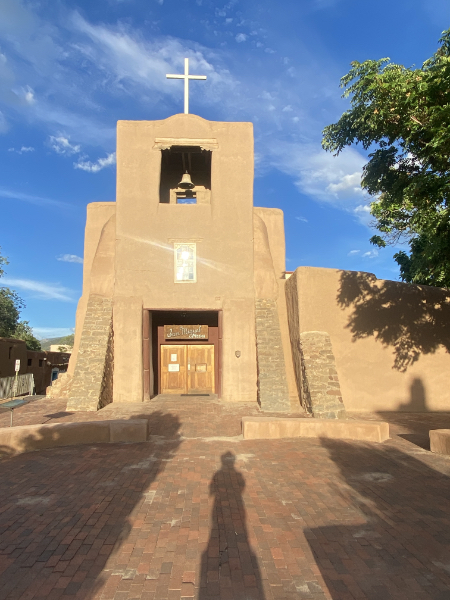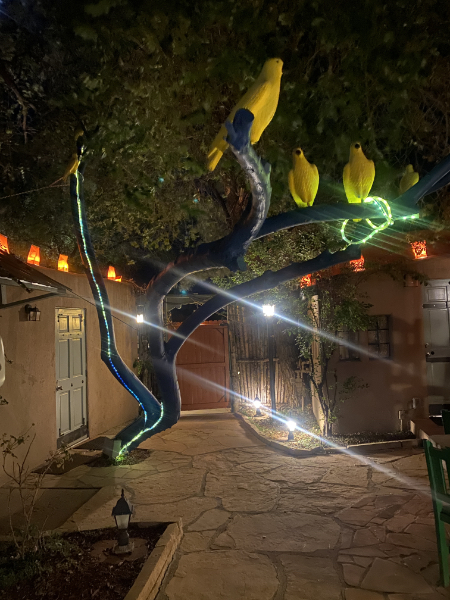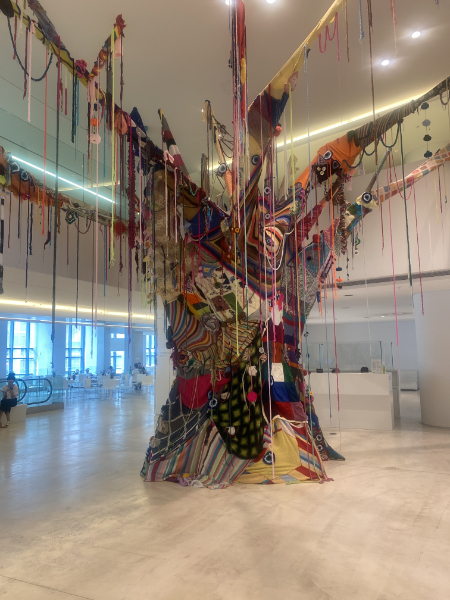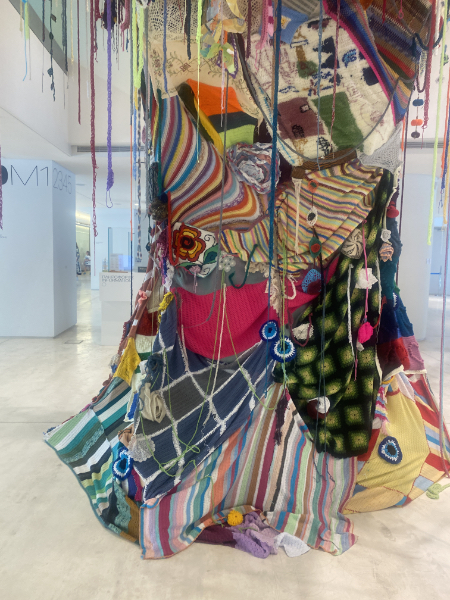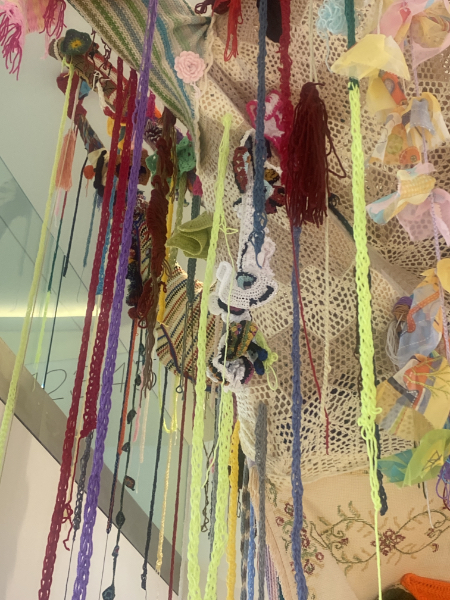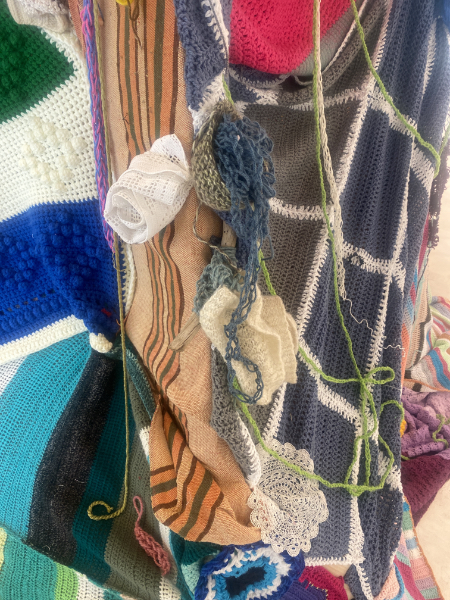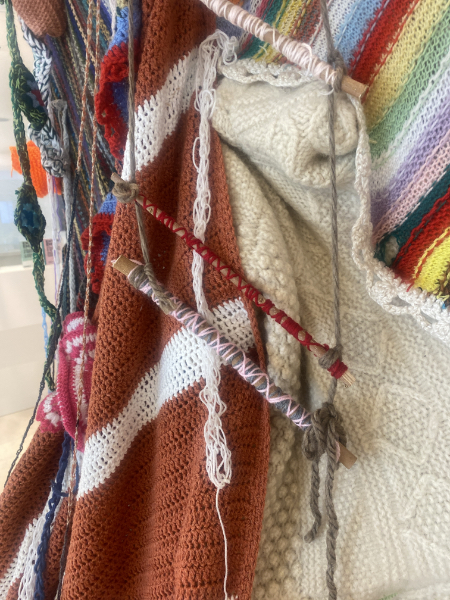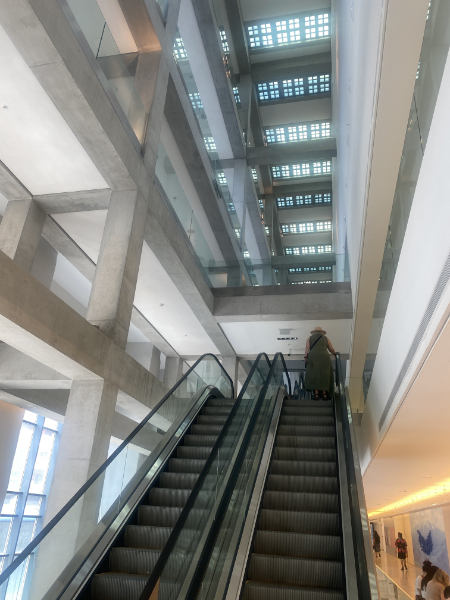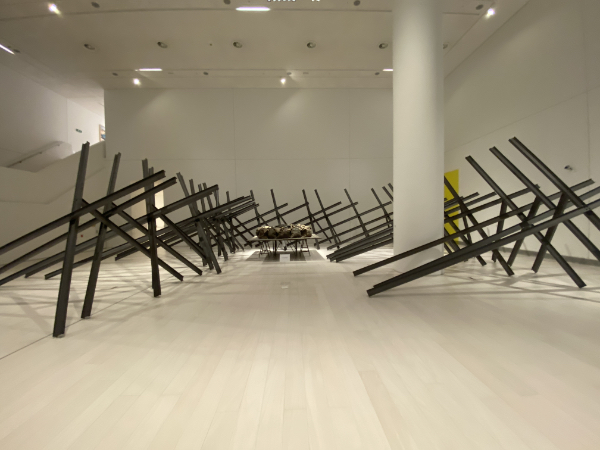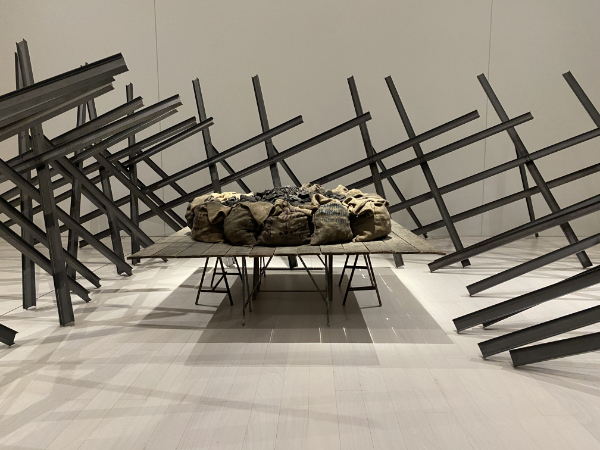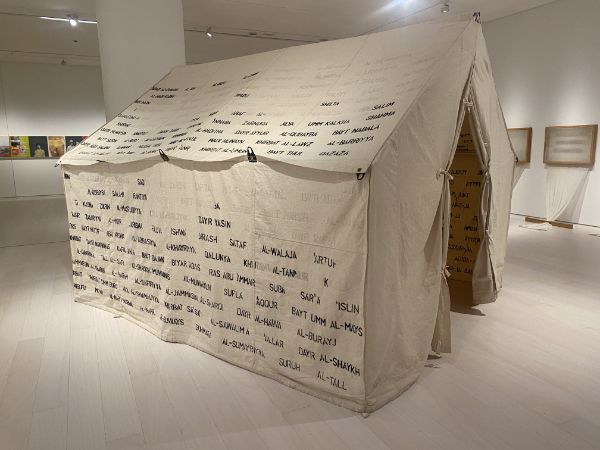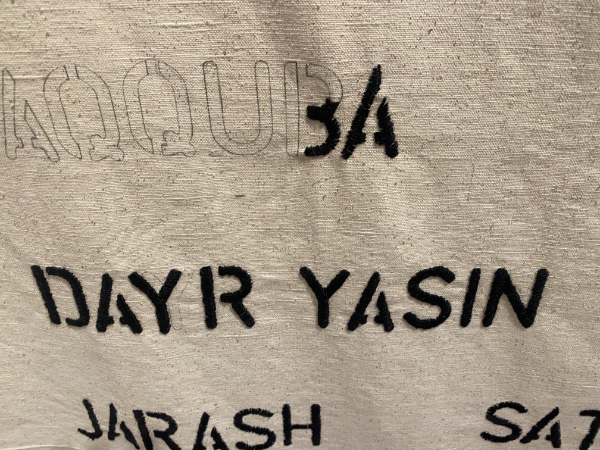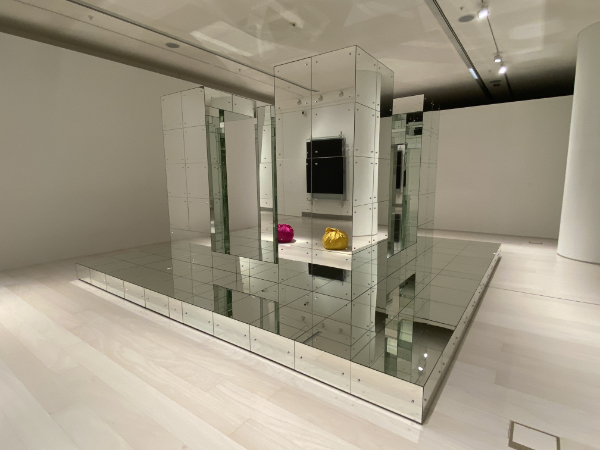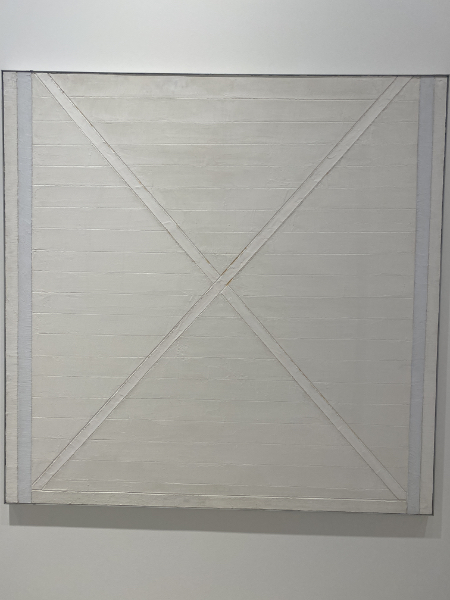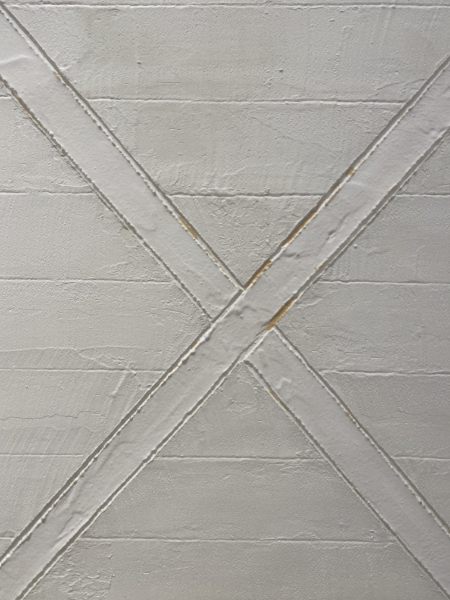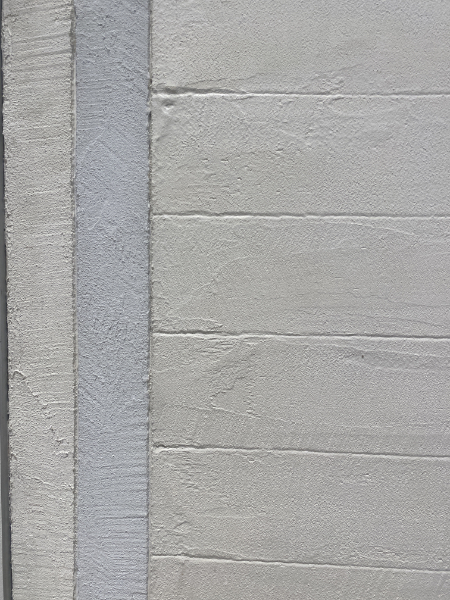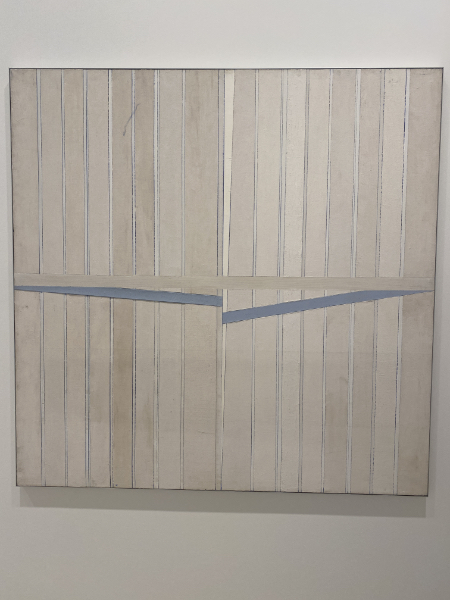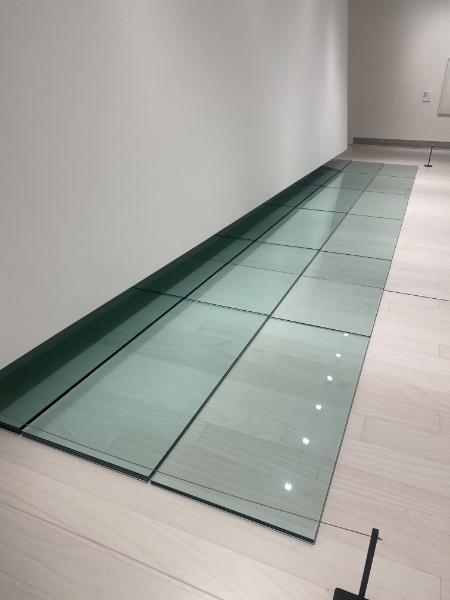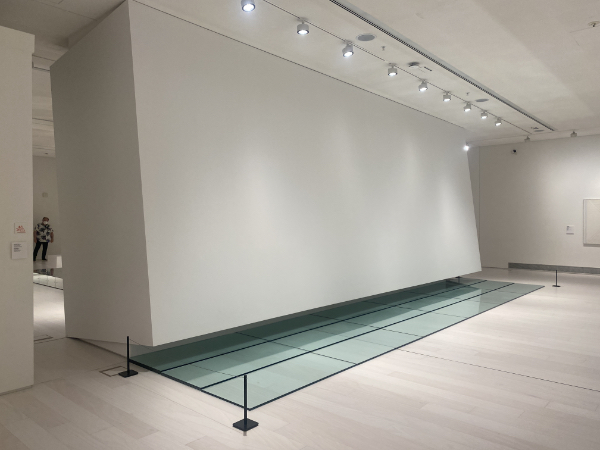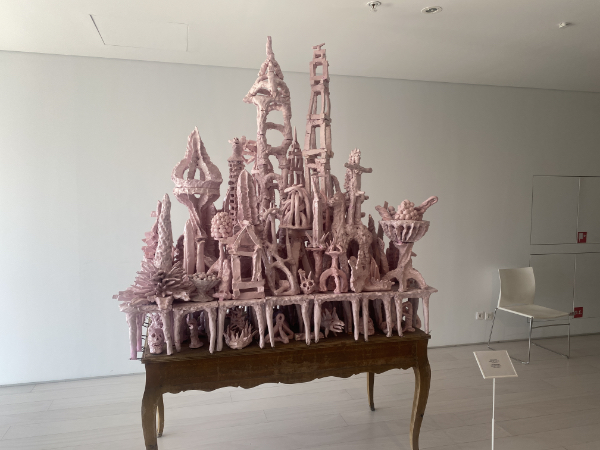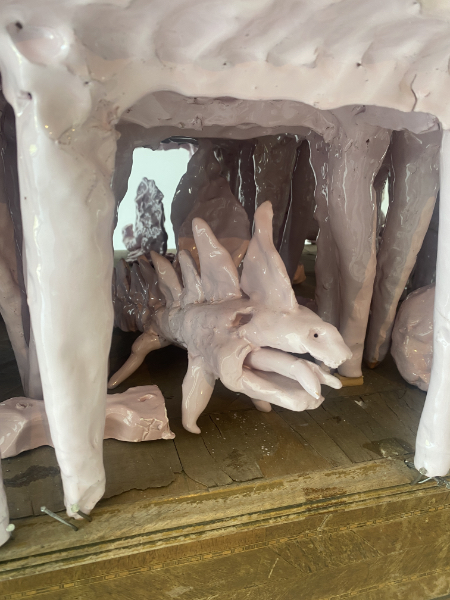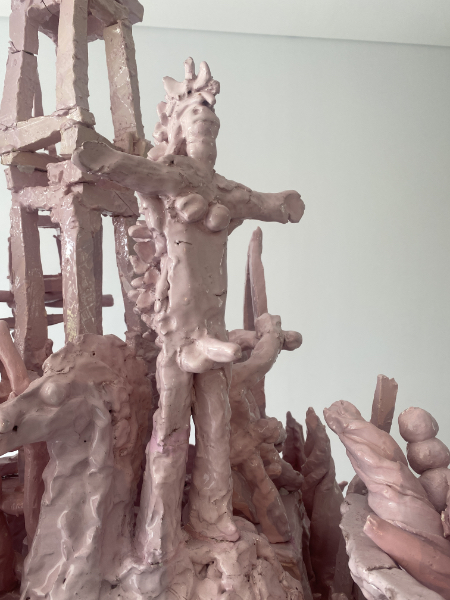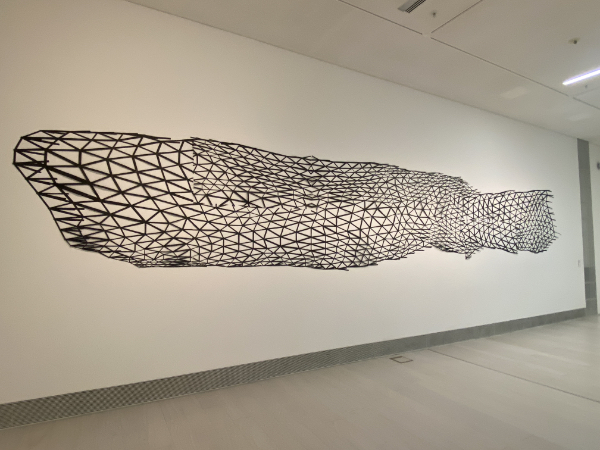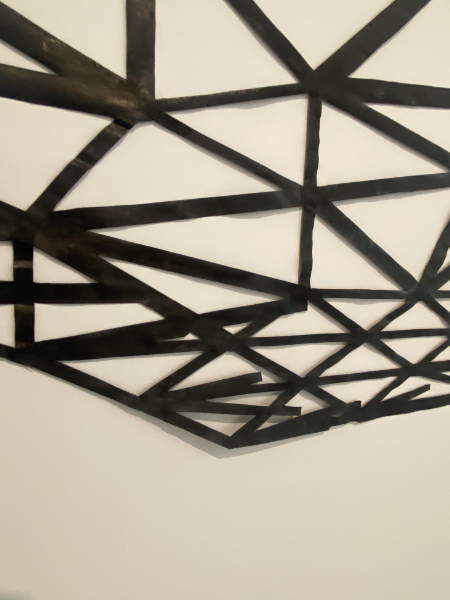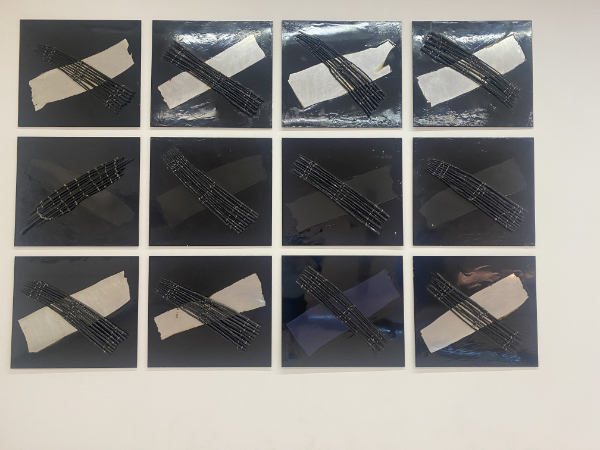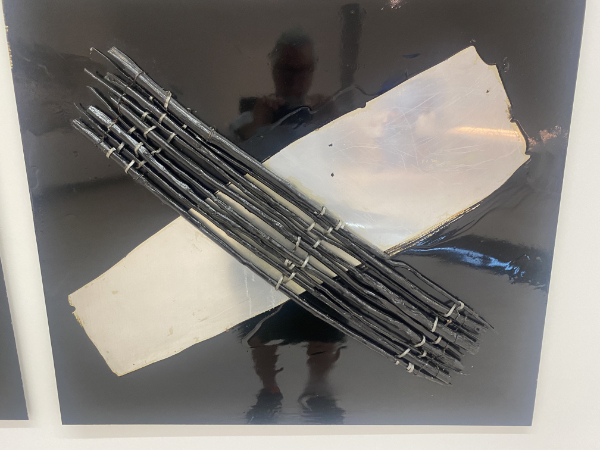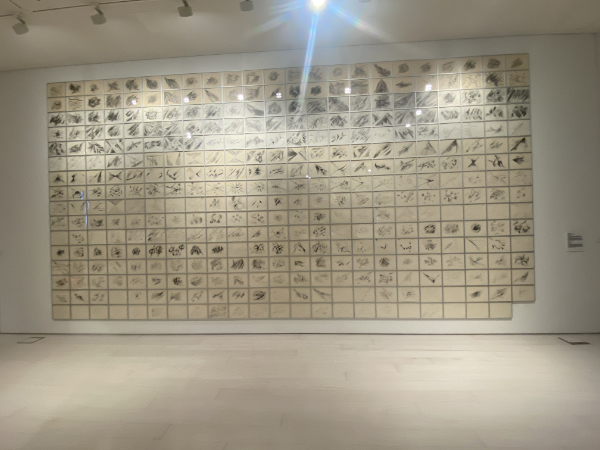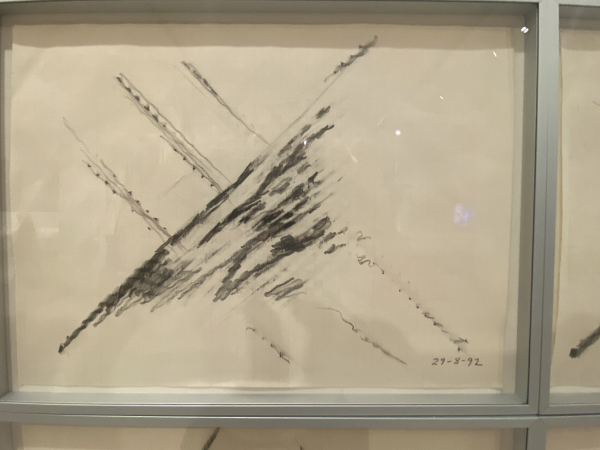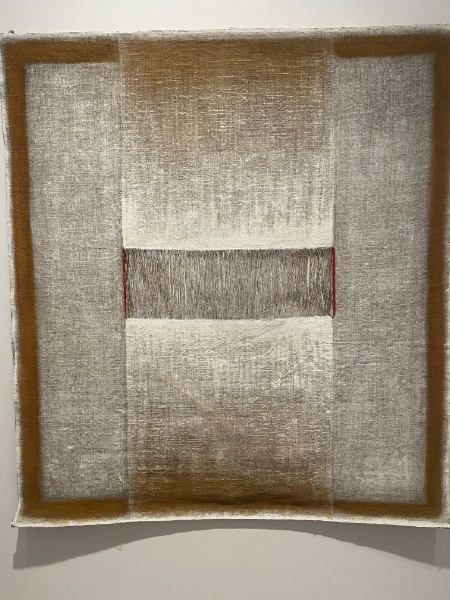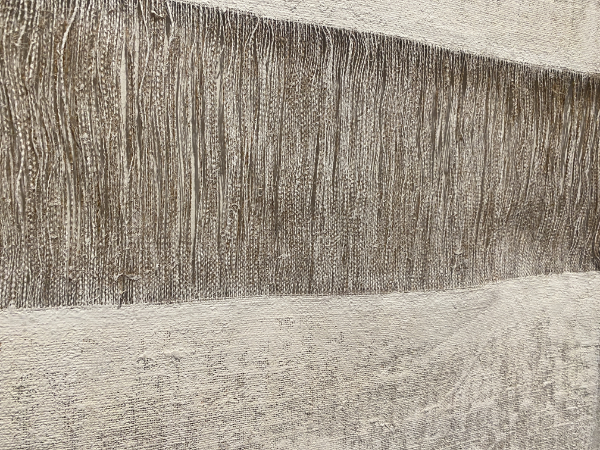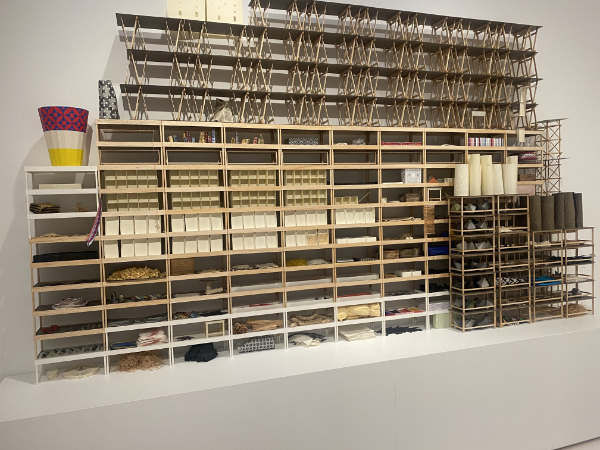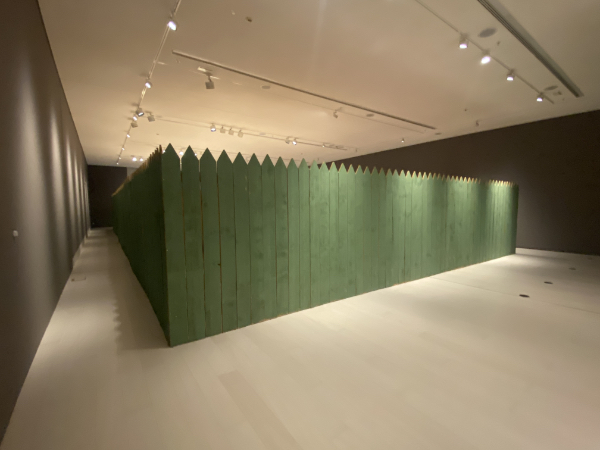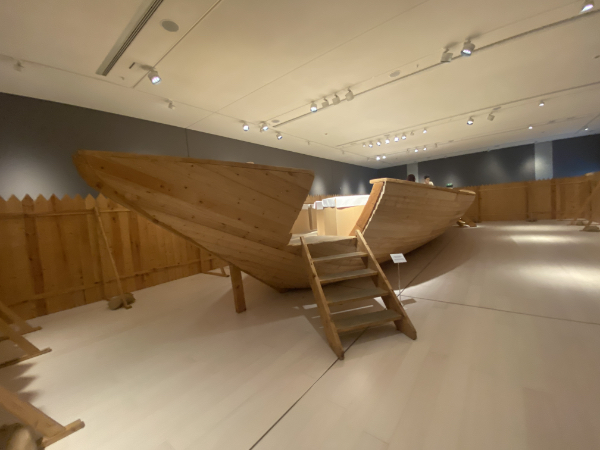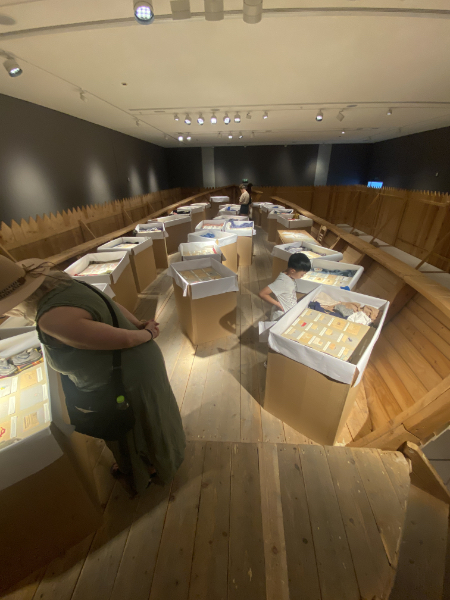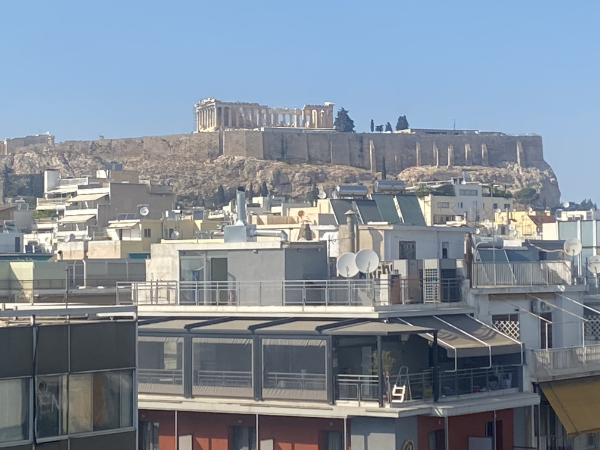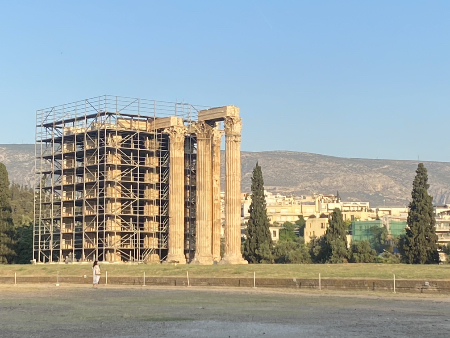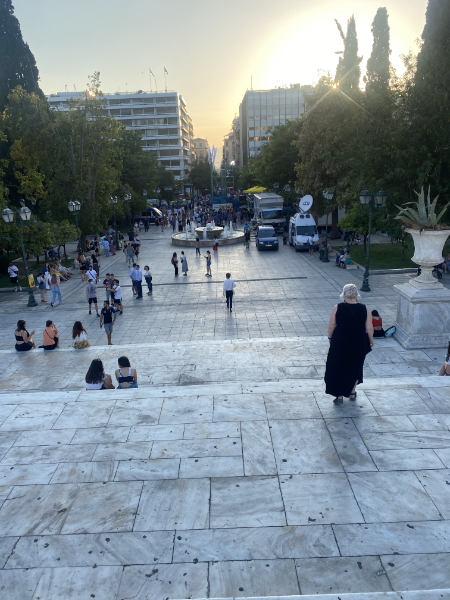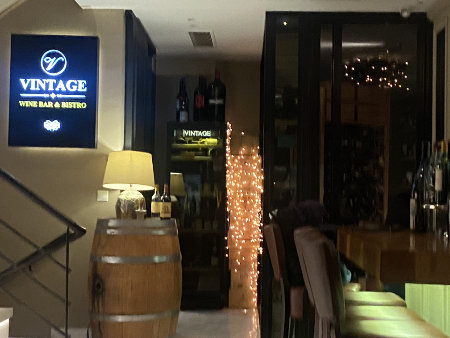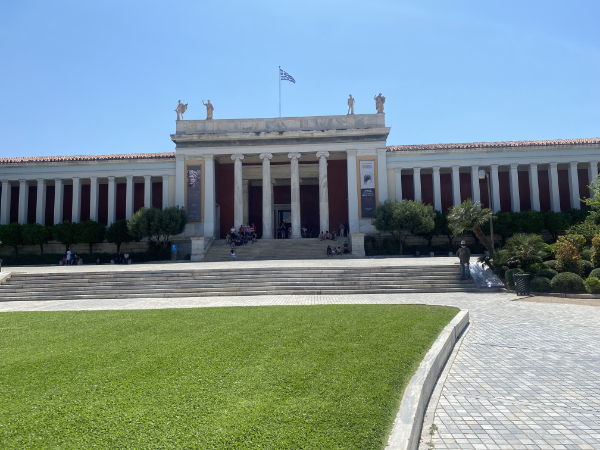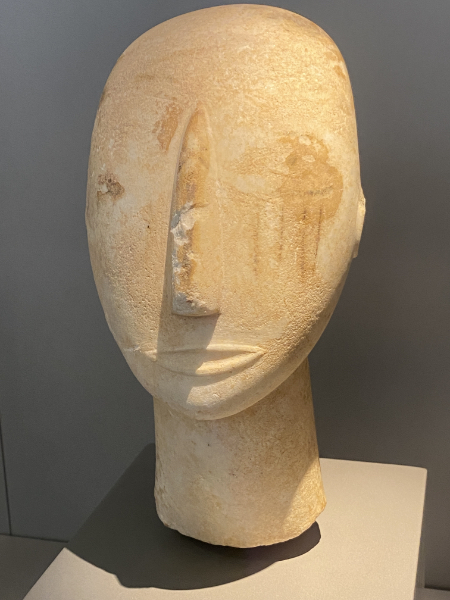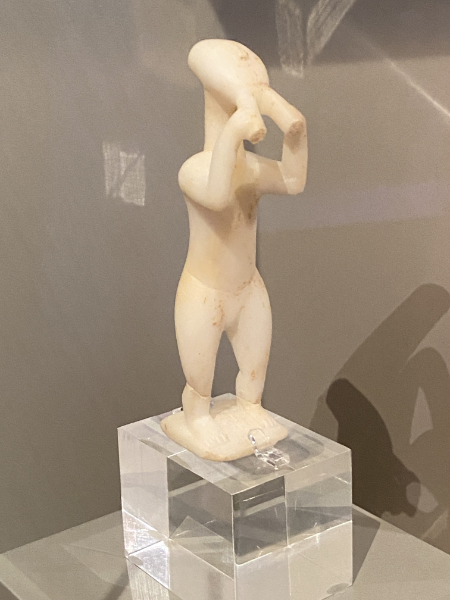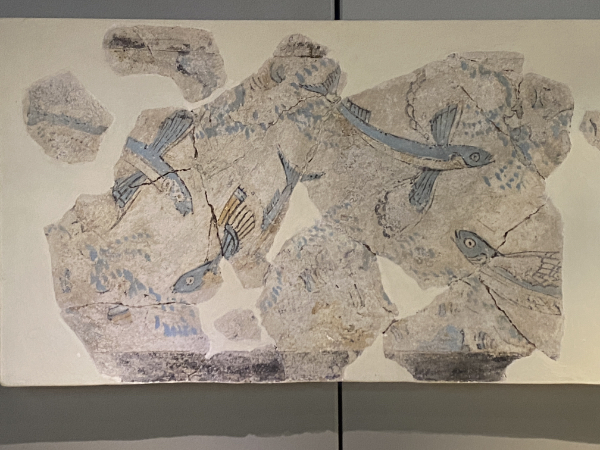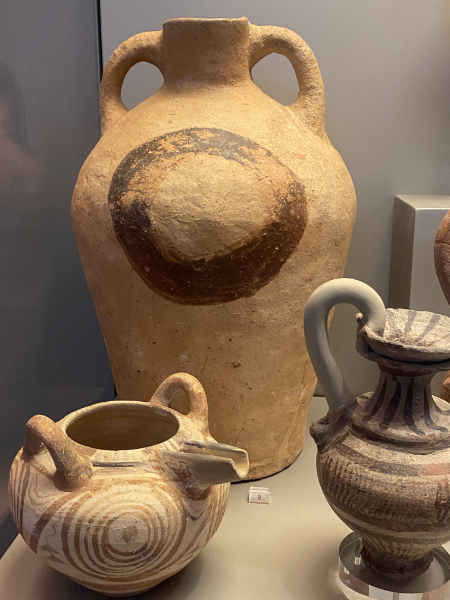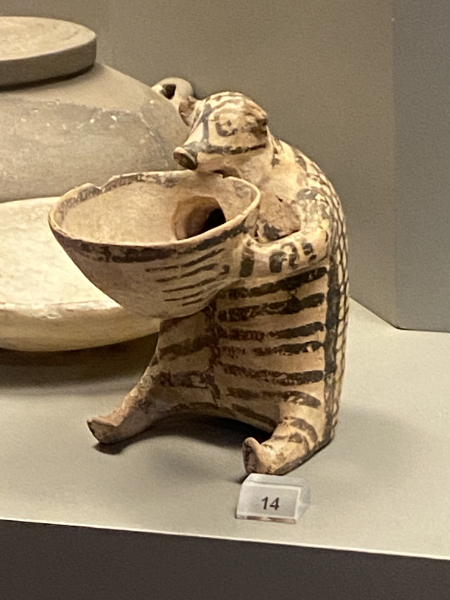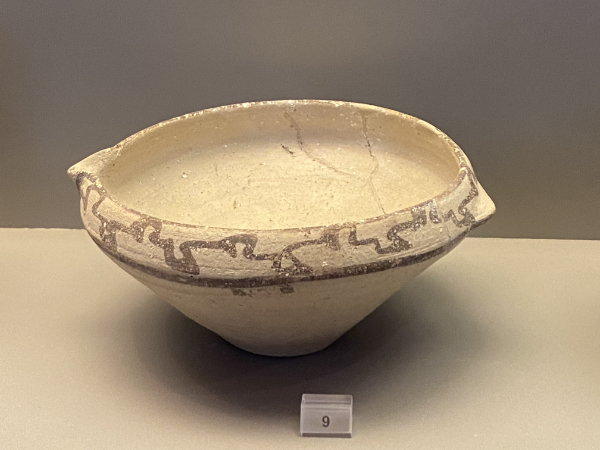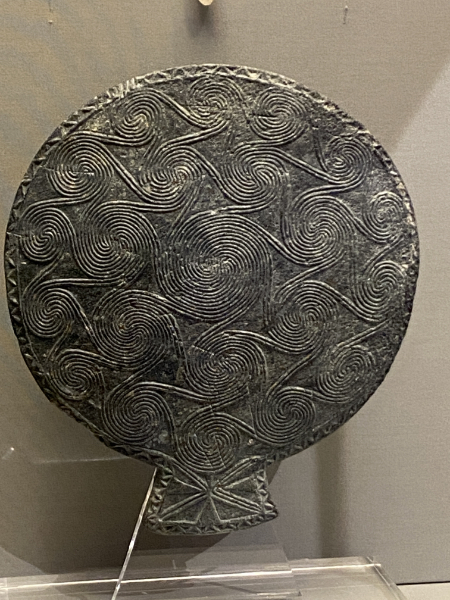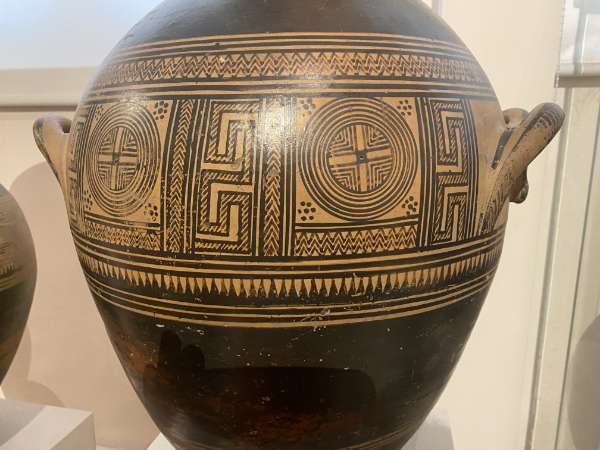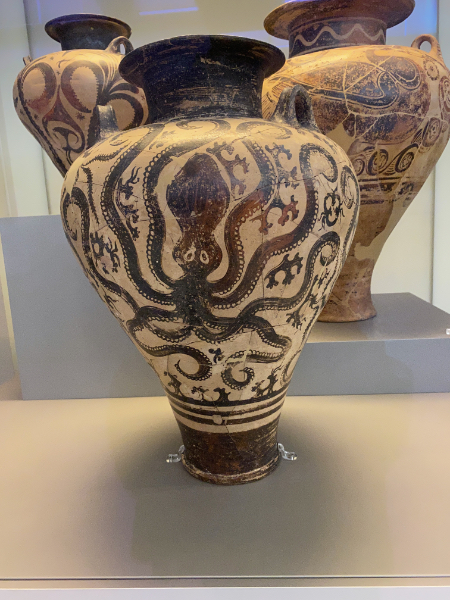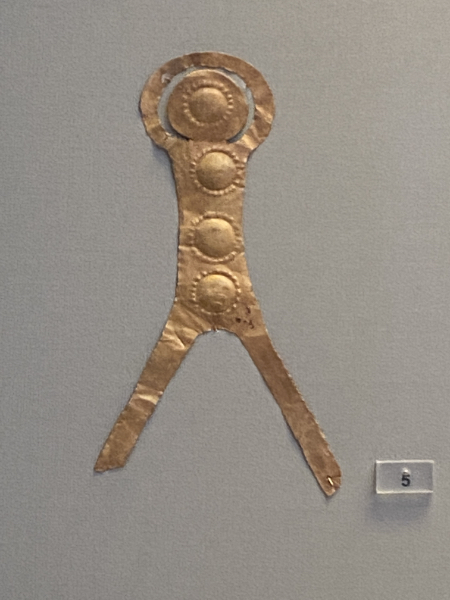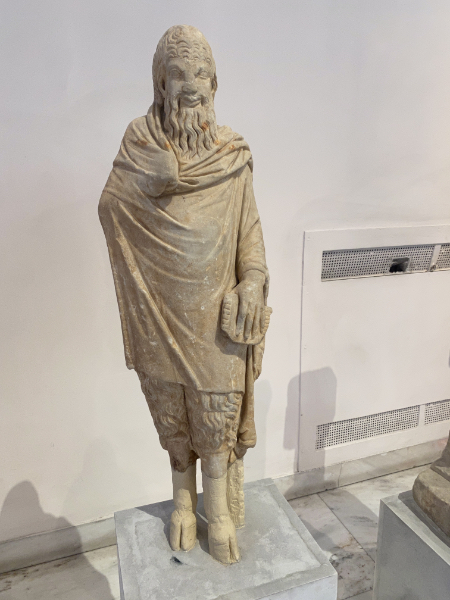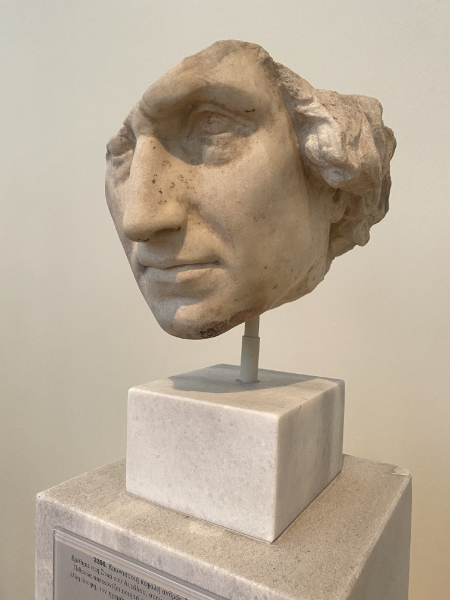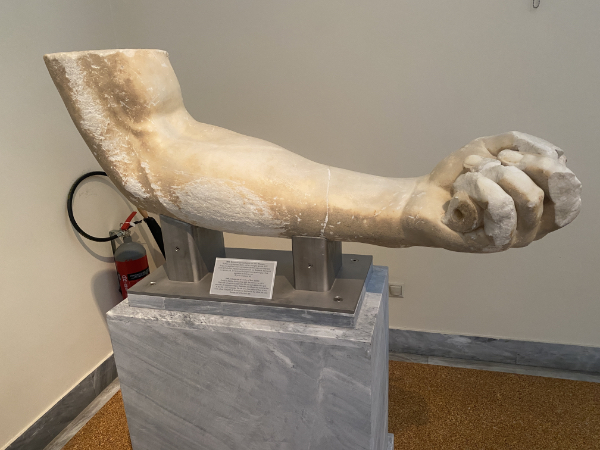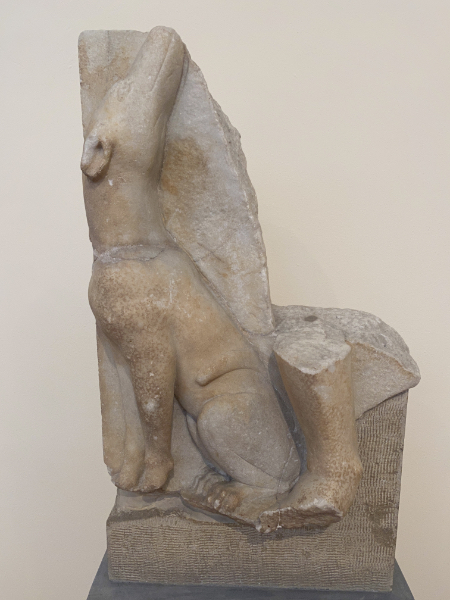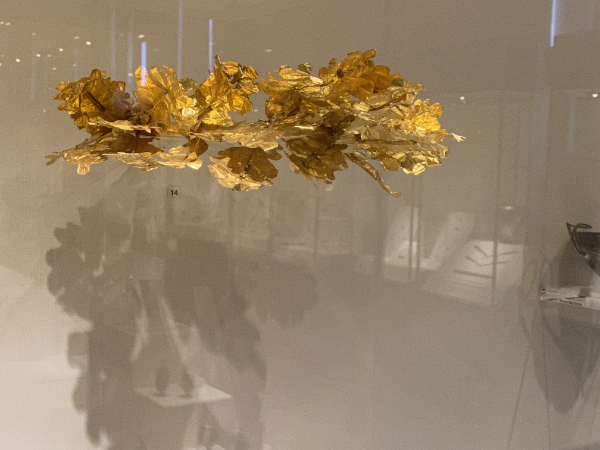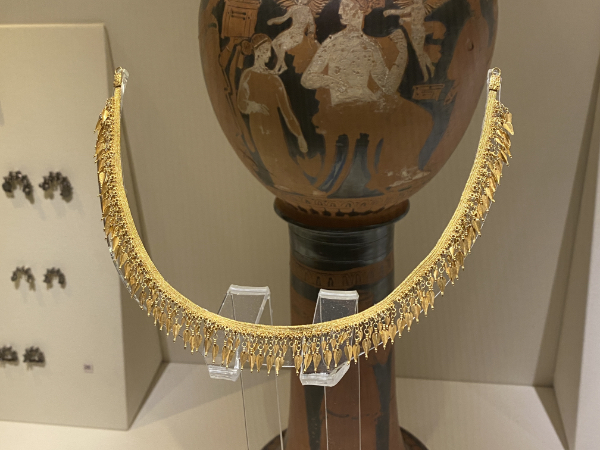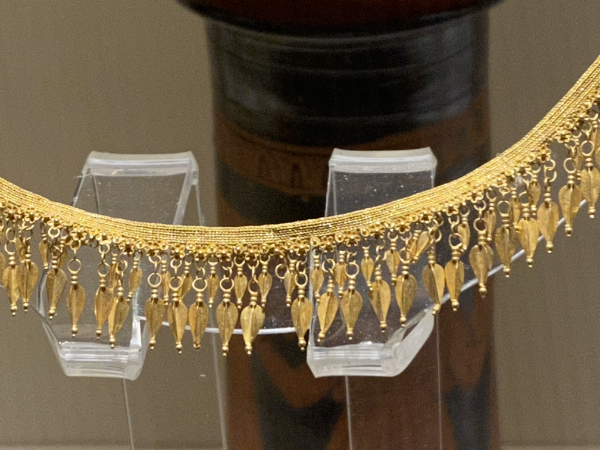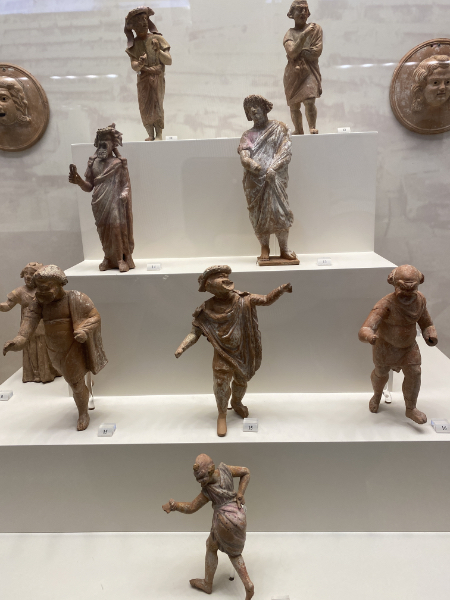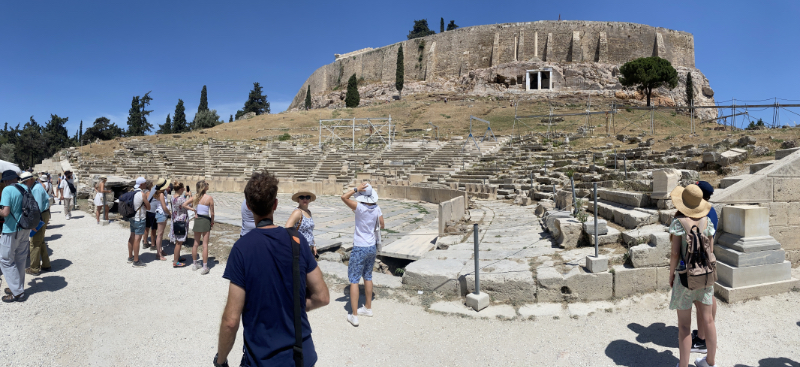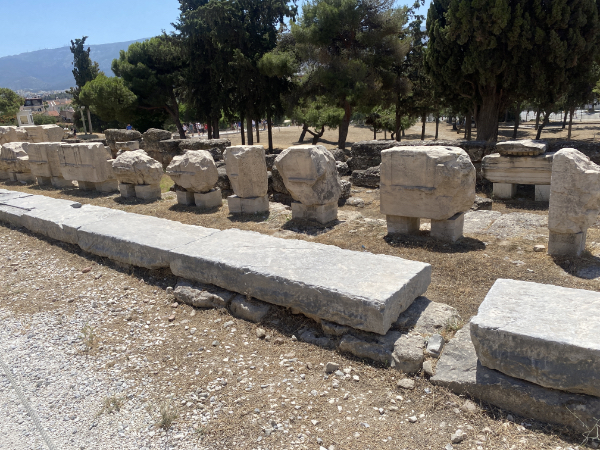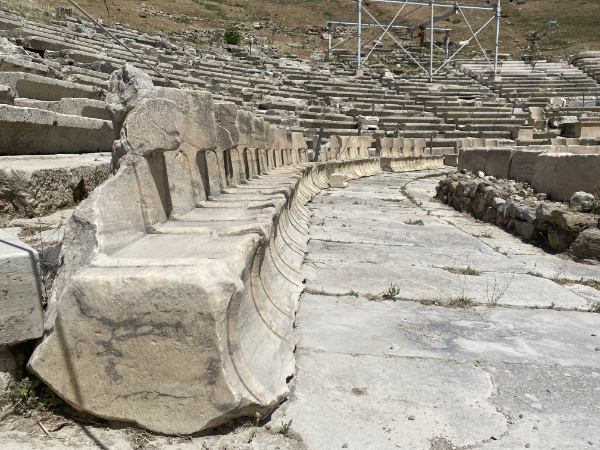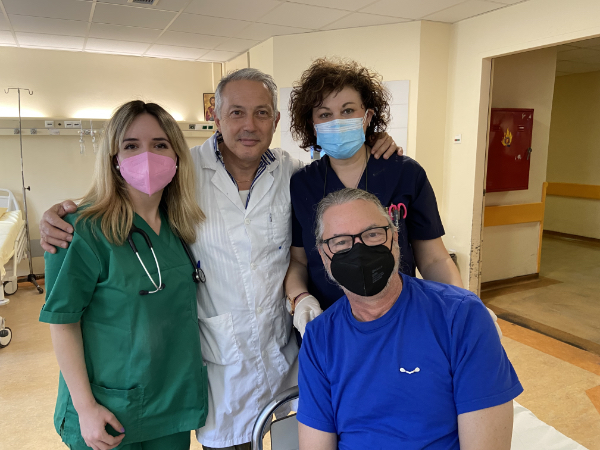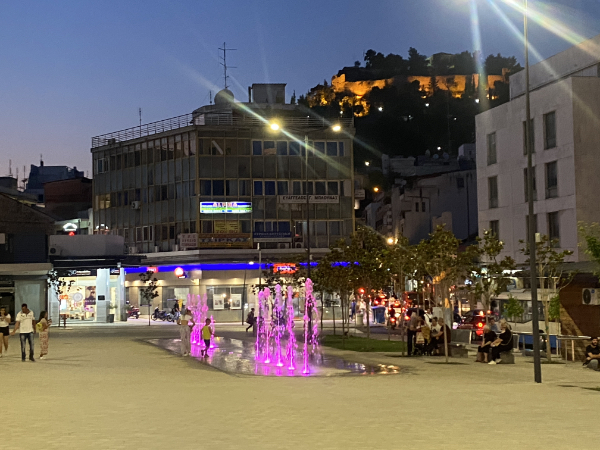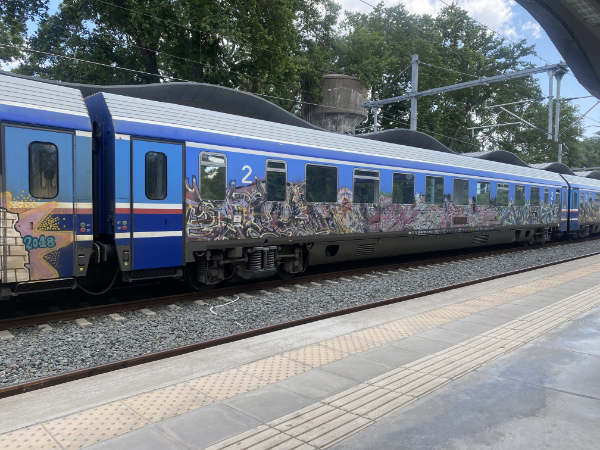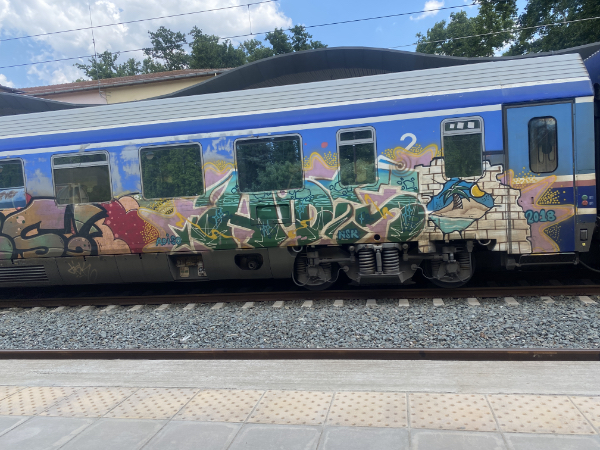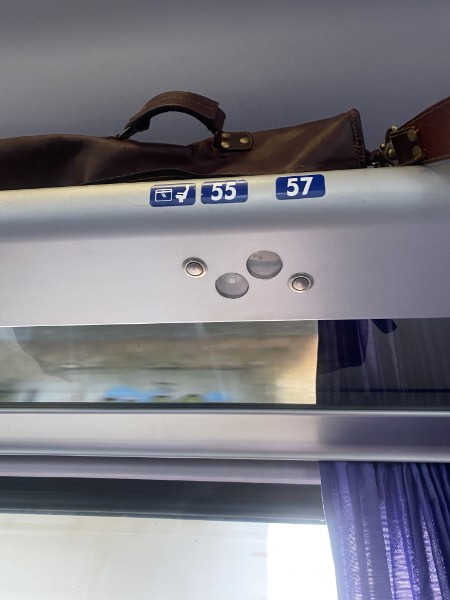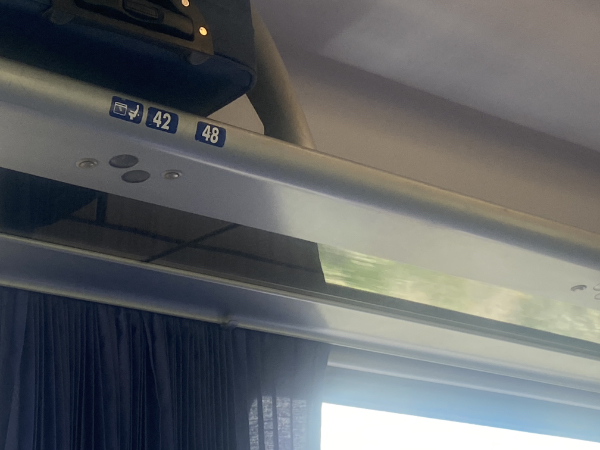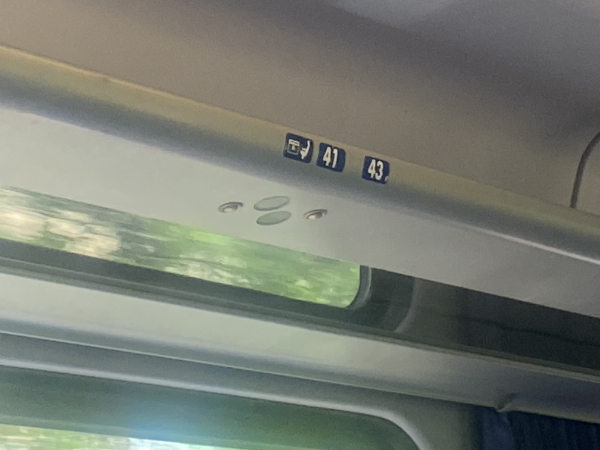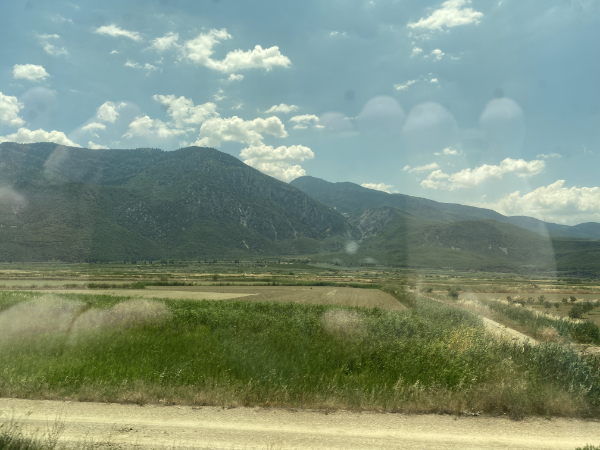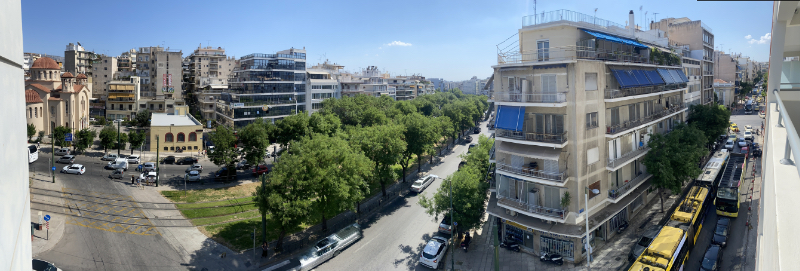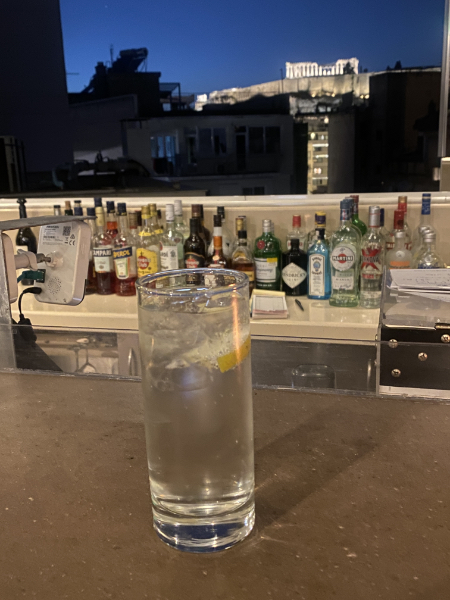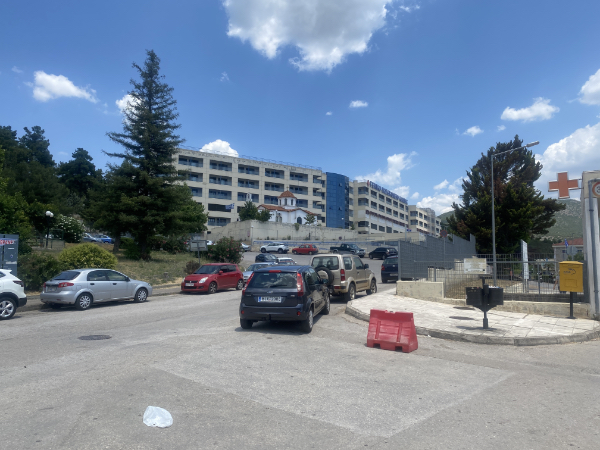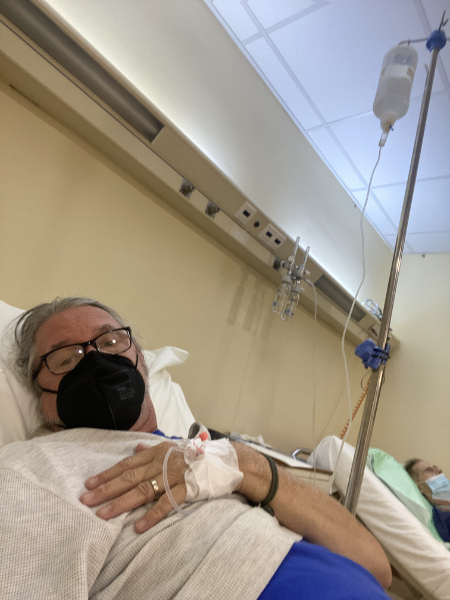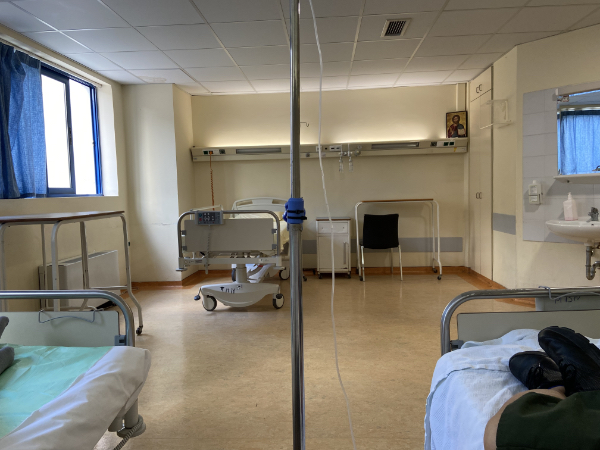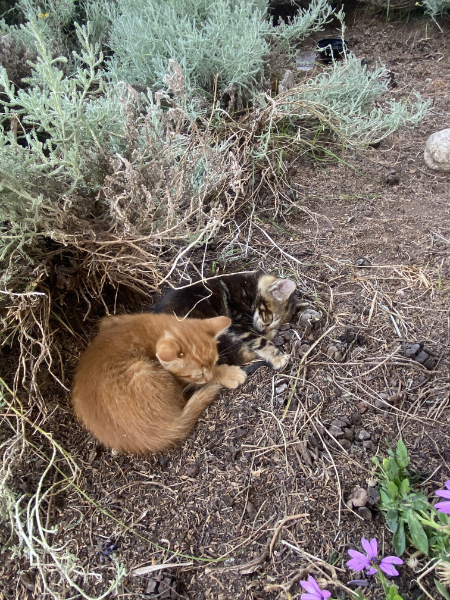After breakfast, we hopped the bus to go over to Market Plaza, and I was startled to be warned by the bus:
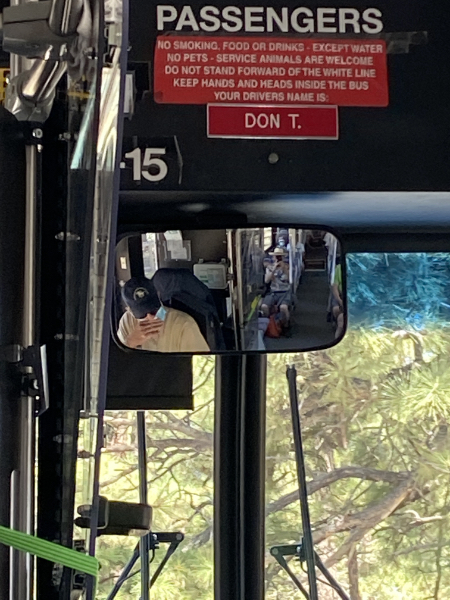
It took me a long moment to realize it was the bus driver’s name.
One of my goals in coming here was to replenish my supply of local gins:

Mission accomplished.
Once we secured our purchases back at the cabin, we walked down to the Red shuttle to head out to Hermit’s Rest.
Neighbors greeted us.
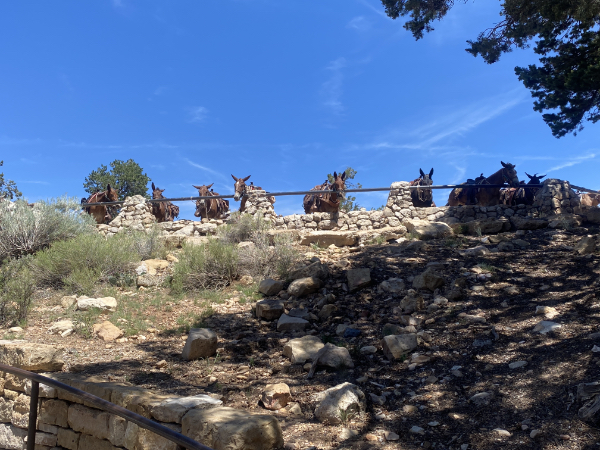
I don’t think they were actually getting ready to head down into the Canyon — heat advisories for the bottom are off the charts — so perhaps their trainers just bring them over here to keep them in the habit.
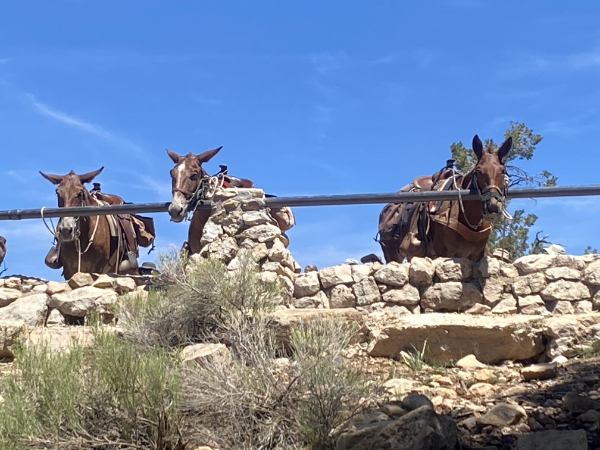
A selfie while waiting for the shuttle, in my new Panama hat.
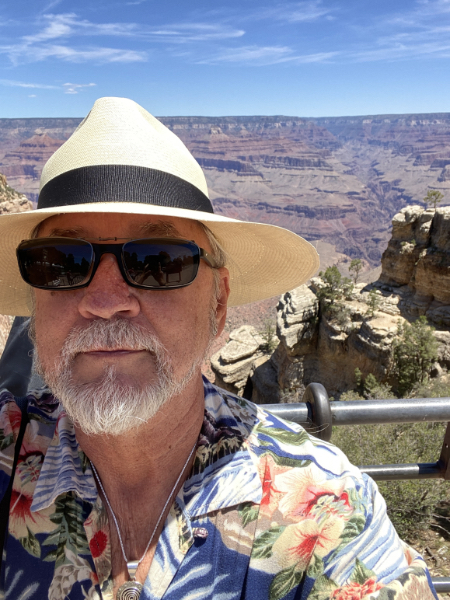
Our goal in heading out to Hermit’s Rest was to be away from the hustle and bustle of the Village and to sit and watch the Canyon. (We took our purchased-at-Walmart-in-Flagstaff-for-$5.99 lawn chairs for this purpose.)
[A chipmunk just jumped up on the wall next to me, greeted me, and chirped along its way.]
Which is a nice segue back to Hermit’s Rest, where we started by getting an ice cream from concessions and sitting to eat. Victor joined us.
Who’s Victor, you ask?
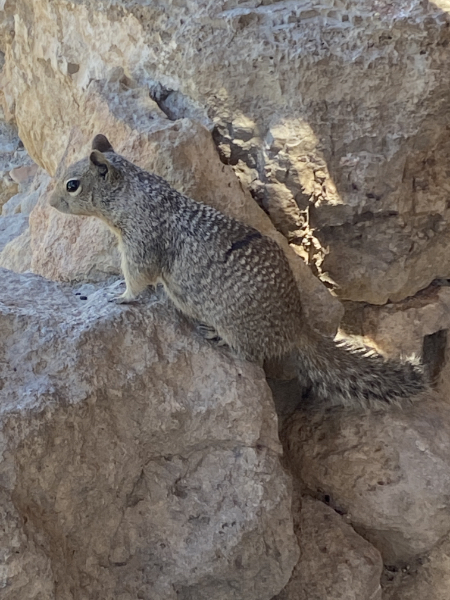
The most dangerous beast in the Canyon, your ground squirrel. They are fearless and opportunistic, and you must not feed them. Which of course two boys from Russia were doing, so Victor and his cohort were all over the place. I’ve found that if they’re insistent, just blow in their little faces and they get the hint.
Victor, after getting the hint:
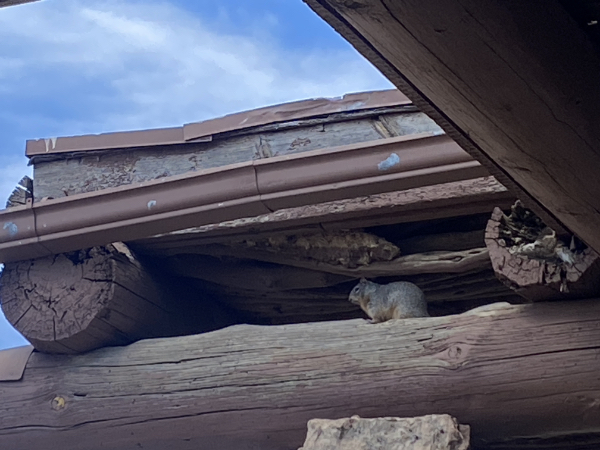
We moved on out from the concession area towards the Hermit’s Rest trailhead and found a spot in the shade with a relatively unobstructed view of the Canyon, and we sat.
We sat for over an hour, just watching the Canyon: it changes in the light every minute, and if you nap (or blog) and then look up, it’s a completely different place than when you last looked.
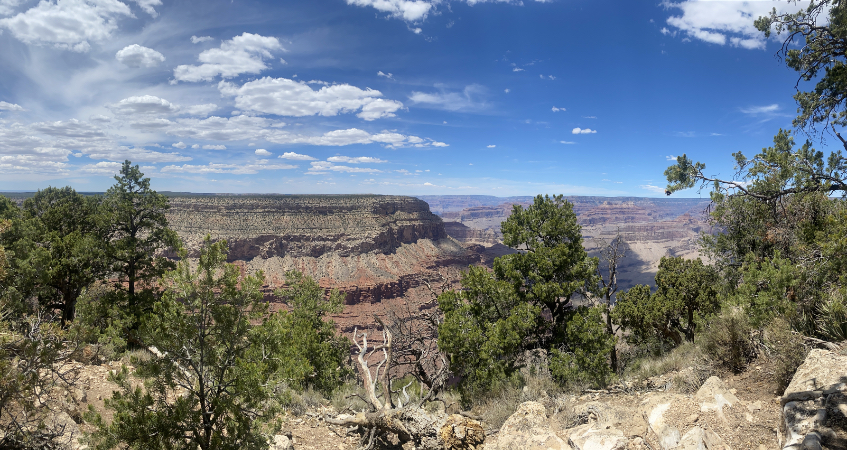
A strange and wonderful thing! We were sitting there when we noticed a sundog above us.
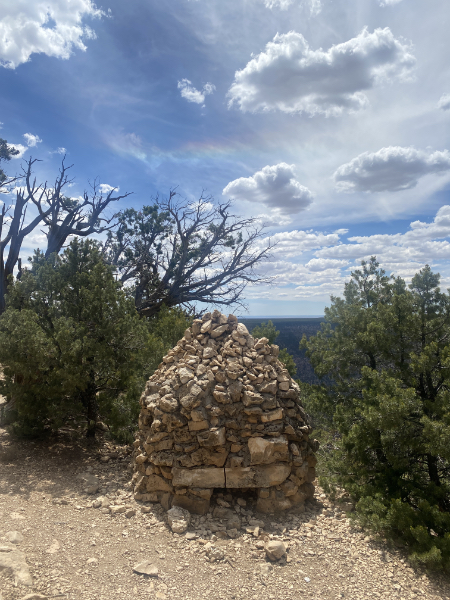
It was faint, but it was large. There were two segments, so I got up to take a better picture, and behold: it was actually the outer of two rainbows.
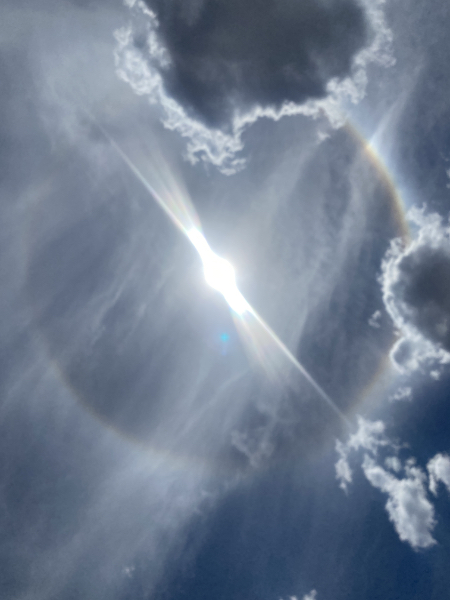
This is a good vacation.
Eventually we headed back to the cabin and rested up. We dressed for dinner at El Tovar and began walking up to the Lodge while the sun was setting.
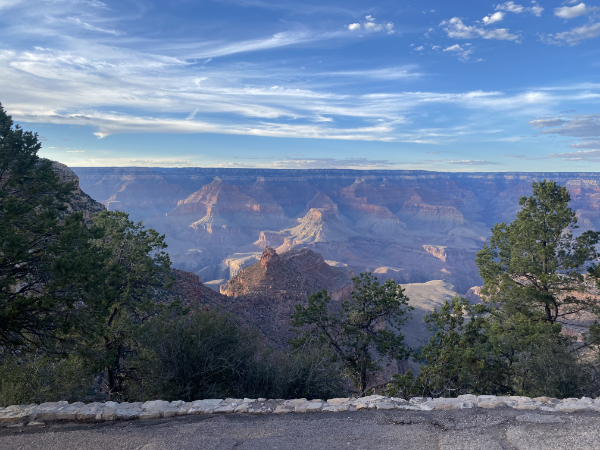
We turned a small corner and…
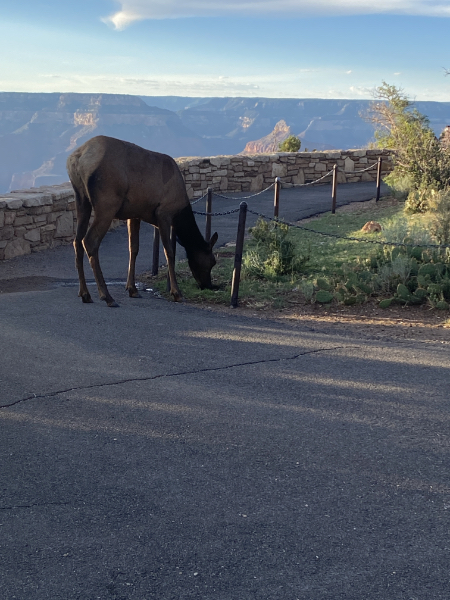
… a young elk trying to drink from a leaky water pipe. The southwest is in the worst drought ever, and the wildlife is suffering along with the humans, so it wasn’t surprising that this animal took advantage of our infrastructure. People were fascinated and respectful, although as we moved on to El Tovar there was one girl who seemed to be moving right up to the beast.
Dinner was lovely, though the dining room was very hot and stuffy. After dinner we stopped at the lounge for a final drink before heading back to the cabin:
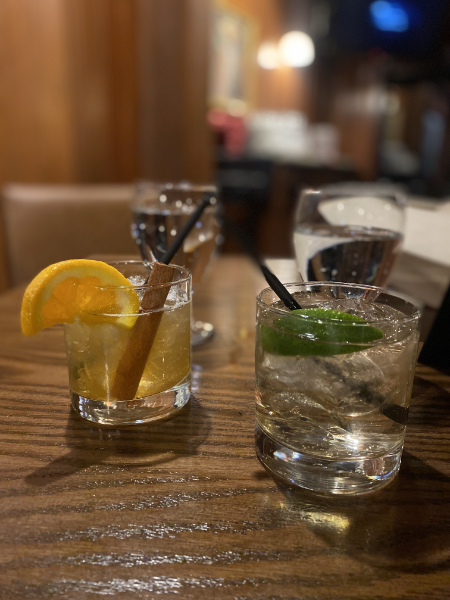
l to r: an Ellsworth Kolb (named after one of the brothers who relentlessly photographed and promoted the Canyon back in the day), which is brandy, Amaretto, clove, and cinnamon, and which I have been told I need to replicate ; and a good old gin and tonic.
I will say that I am a little surprised that the cocktail game at Xanterra’s establishments isn’t stronger. At the very least, shouldn’t they be offering the local gins and vodkas in their cocktails? They should hire me as an artist-in-residence for a year to up their game.
Anyway, heading back to the cabin we encountered: a gray fox on its evening rounds; three young elk grazing by El Tovar; two baby elk curled up in front of the Thunderbird Lodge; and their mother, sitting across the sidewalk and watching us calmly but alertly.
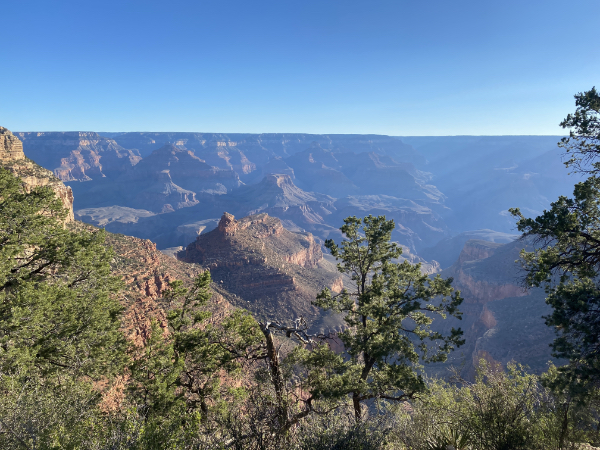
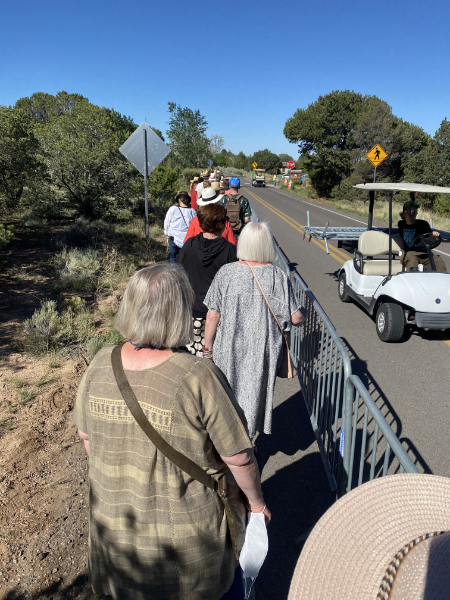
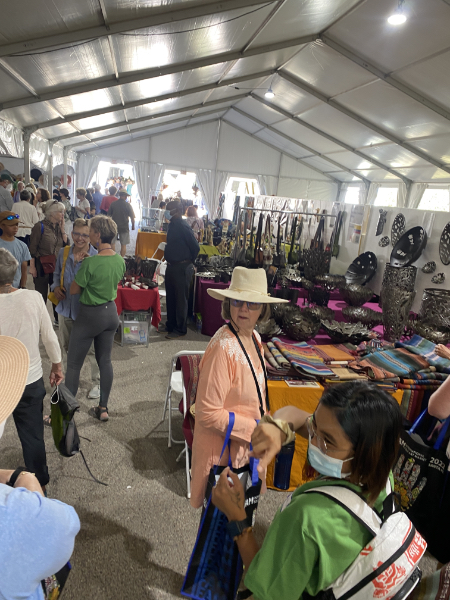
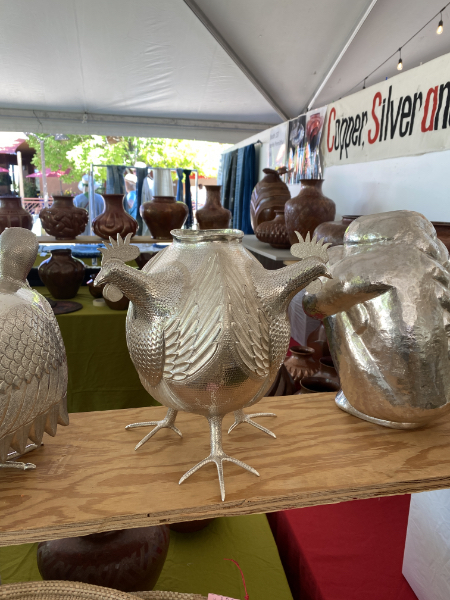

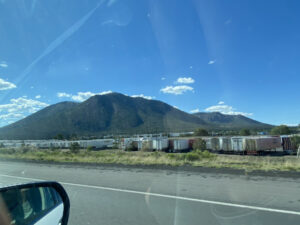
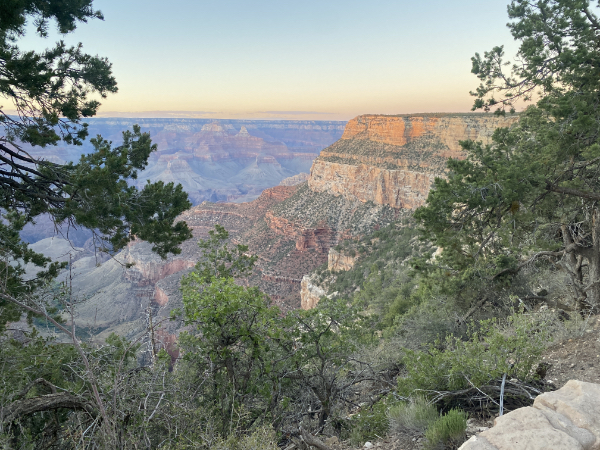
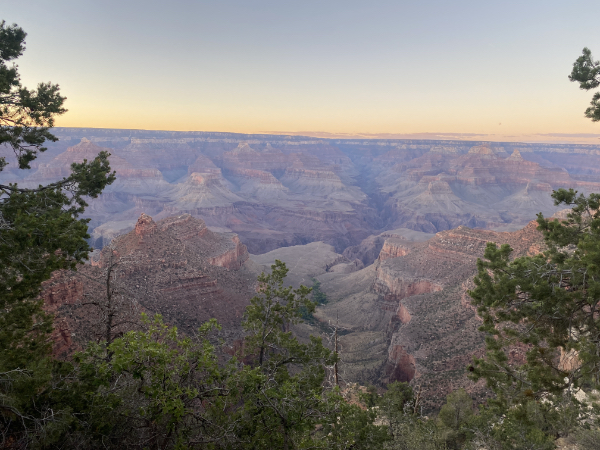
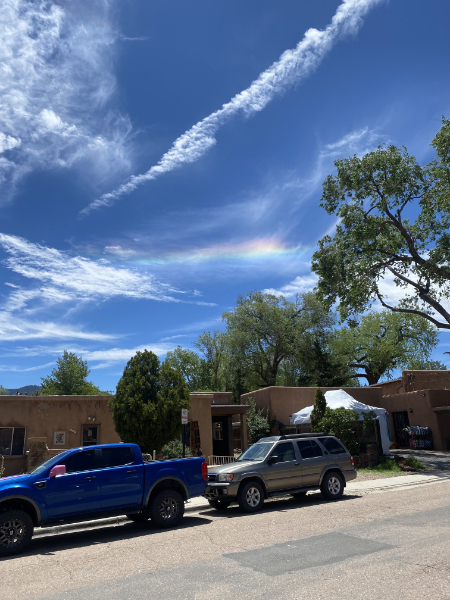
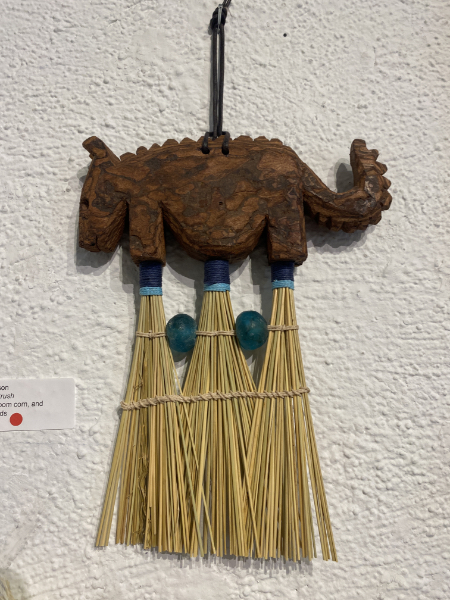
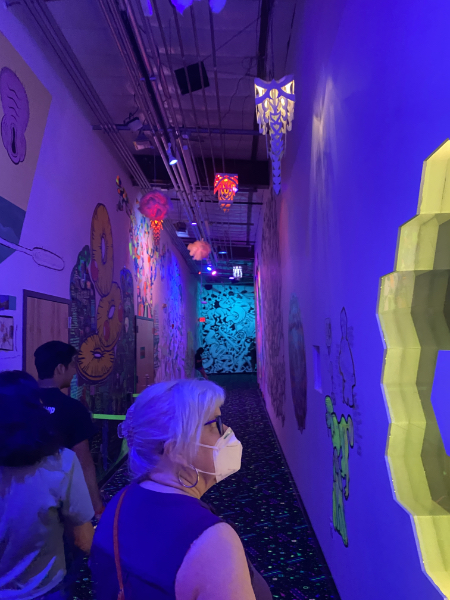
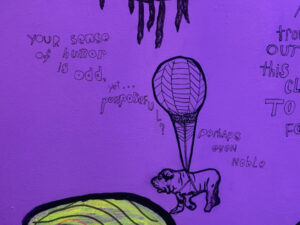
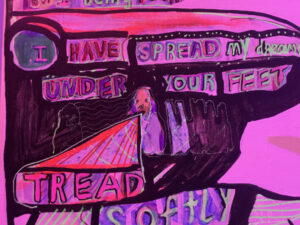
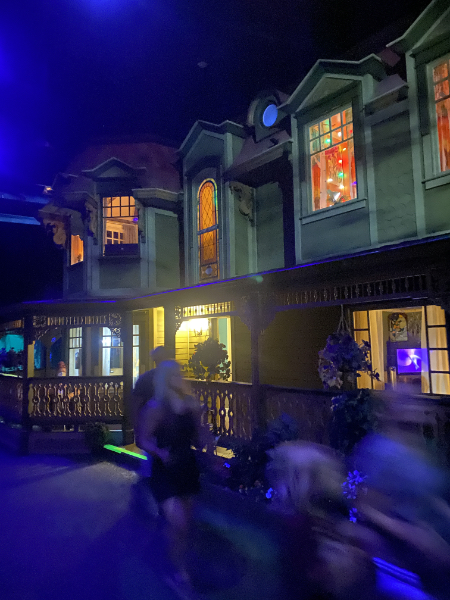
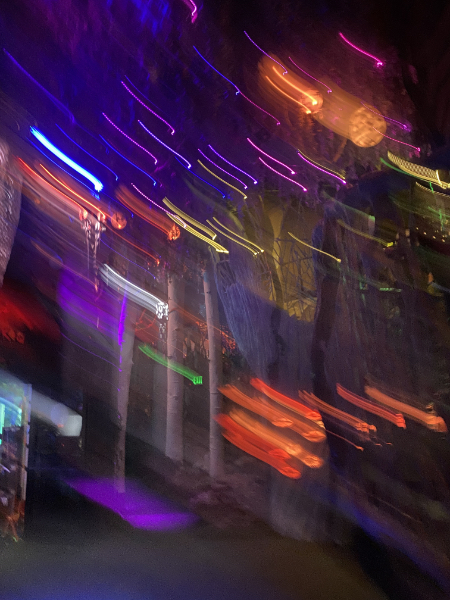
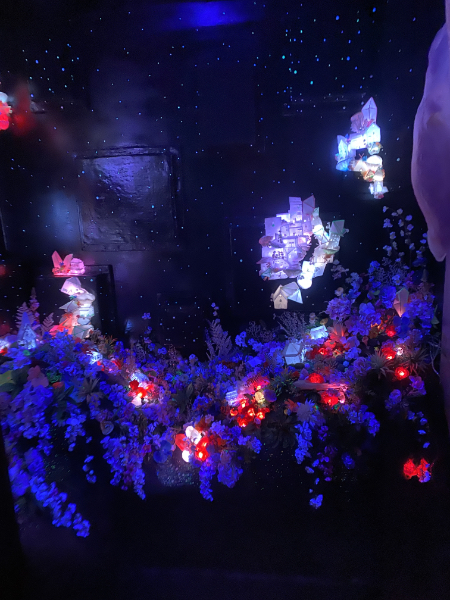
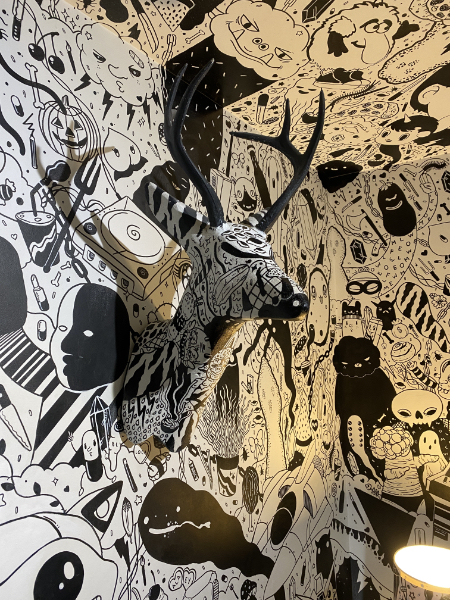
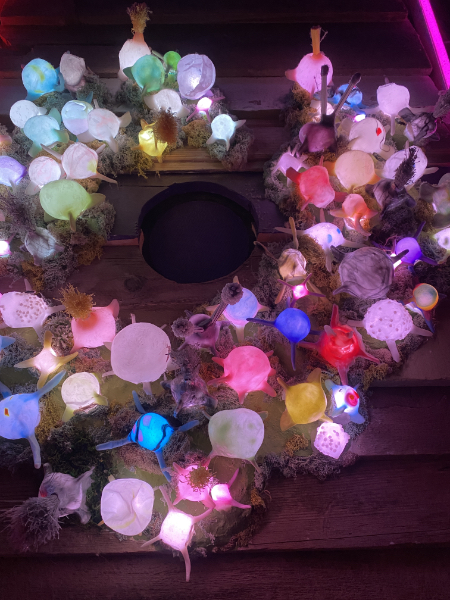
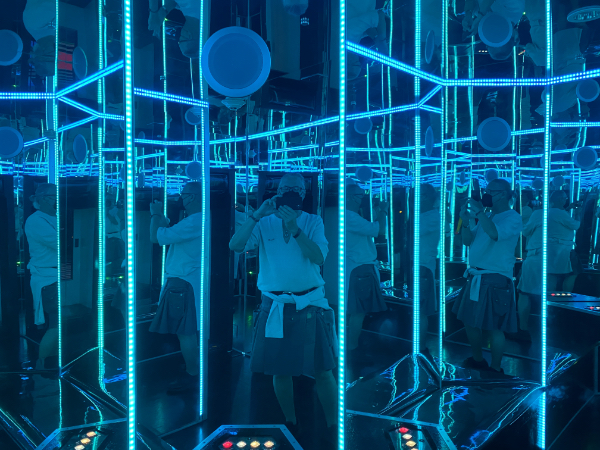
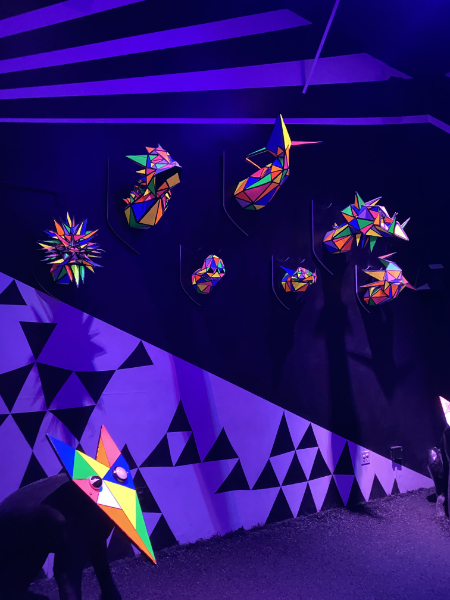

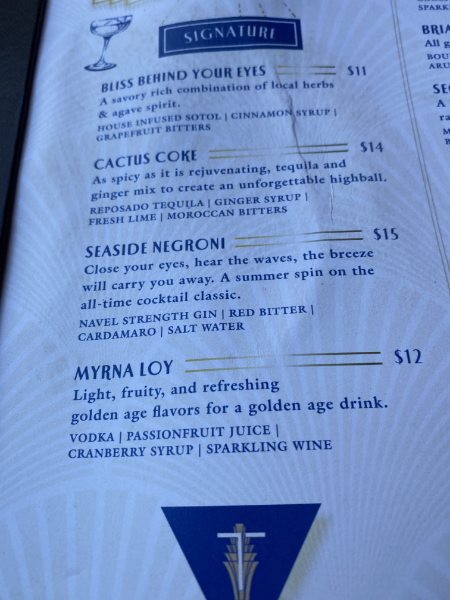
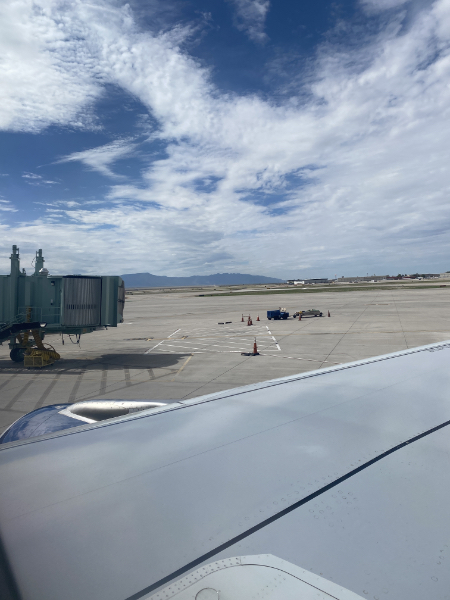 We landed in Albuquerque and headed to the Payless car rental desk. Hilarity ensued. First of all, Payless doesn’t have a desk. They have a little printed sign alerting you that the Budget desk is handling those rentals. The gentleman who assisted me seemed to be some kind of management person who was filling in and not at all familiar with how the Payless interface worked, but he finally got it all worked out.
We landed in Albuquerque and headed to the Payless car rental desk. Hilarity ensued. First of all, Payless doesn’t have a desk. They have a little printed sign alerting you that the Budget desk is handling those rentals. The gentleman who assisted me seemed to be some kind of management person who was filling in and not at all familiar with how the Payless interface worked, but he finally got it all worked out.